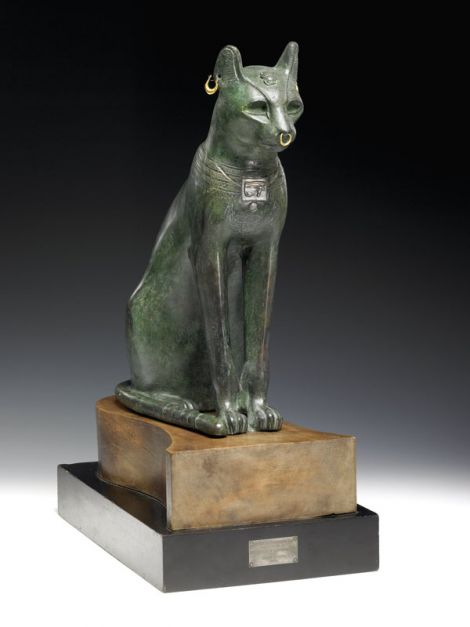Reviews / Review: This cat must be seen
My first impressions of this famous moggie – it’s bigger, it’s greener and it’s got three gold rings, not just one as I expected.
This is a classy cat, an iconic Egyptian symbol. Egyptian museums are, of course, stuffed with cats and elegant examples still hunt under cafe tables, but this one is special. It’s green rather than black (the exhibition does explain why it’s green) and it has its full set of gold rings. Like all Egyptian cats, sculpted or alive, it is supremely aloof. This is not a pet looking for attention but a god: watching us.
The exhibition tells the story of the cat, given to the British Museum by Major Gayer-Anderson. His own house still exists in Cairo, a medieval structure butting against the walls of the vast 9th century Ibn Tulun mosque amongst the lanes of the ancient city.
You can visit his house, quietly forgotten, slightly dusty, with minimal interpretation and packed full of atmosphere and a huge collection of fantastic objects.
The cat would have fitted in well here, even in its pre-restoration state and amongst medieval, ottoman and other ancient Egyptian objects it would have had a presence.
The cat would be like the other objects – dusty, chipped and jumbled, but carefully selected and amongst the best of their type.
Now restored and isolated in its glass case the cat maintains its dignity but has lost its context. It’s no longer worshipped, but continues to be admired.
Because of this we can see the cat, not as the symbol of a god, but as an amazing object. We can admire the material, the design, the workmanship and wonder about who made it around 600BC.
Made of copper alloy with silver on its necklace and gold rings the cat carries other Egyptian symbols, the wadjet eye, or eye of Horus, the symbol of protection and royal power on its necklace, a winged scarab on its chest and another scarab on its forehead representing the cycle of the sun.
More impressive are the cats muscles, sinews and spine and the lifelike posture.
This cat must be seen. One object, but it still carries with it the history and power of Ancient Egypt.
The Gayer-Anderson cat is on display at Shetland Museum & Archives until Sunday 9 December
Mike Fennie
Become a member of Shetland News
Shetland News is asking its many readers to consider paying for membership to get additional features and services: -
- Remove non-local ads;
- Bookmark posts to read later;
- Exclusive curated weekly newsletter;
- Hide membership messages;
- Comments open for discussion.
If you appreciate what we do and feel strongly about impartial local journalism, then please become a member of Shetland News by either making a single payment, or setting up a monthly, quarterly or yearly subscription.


























































